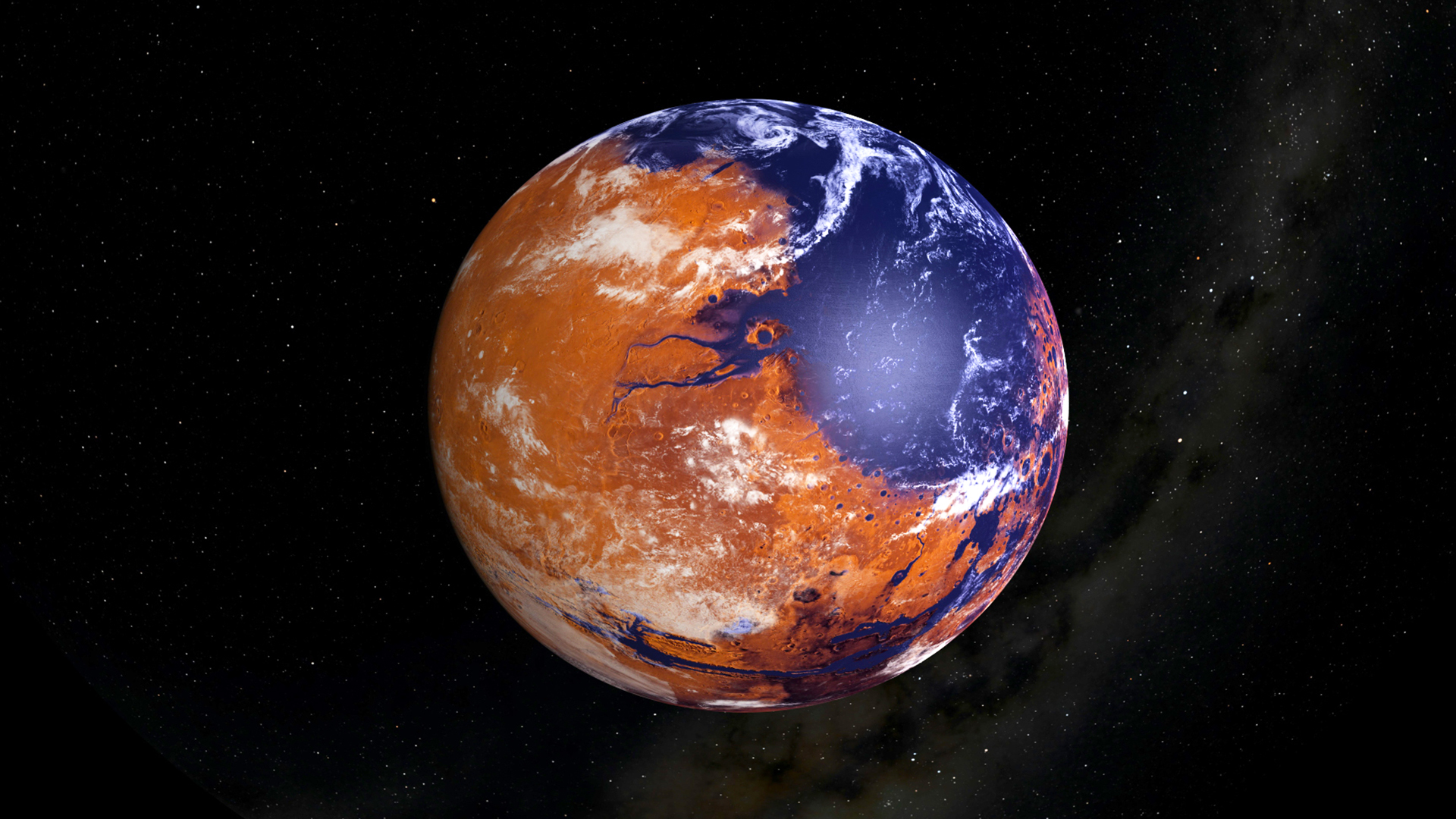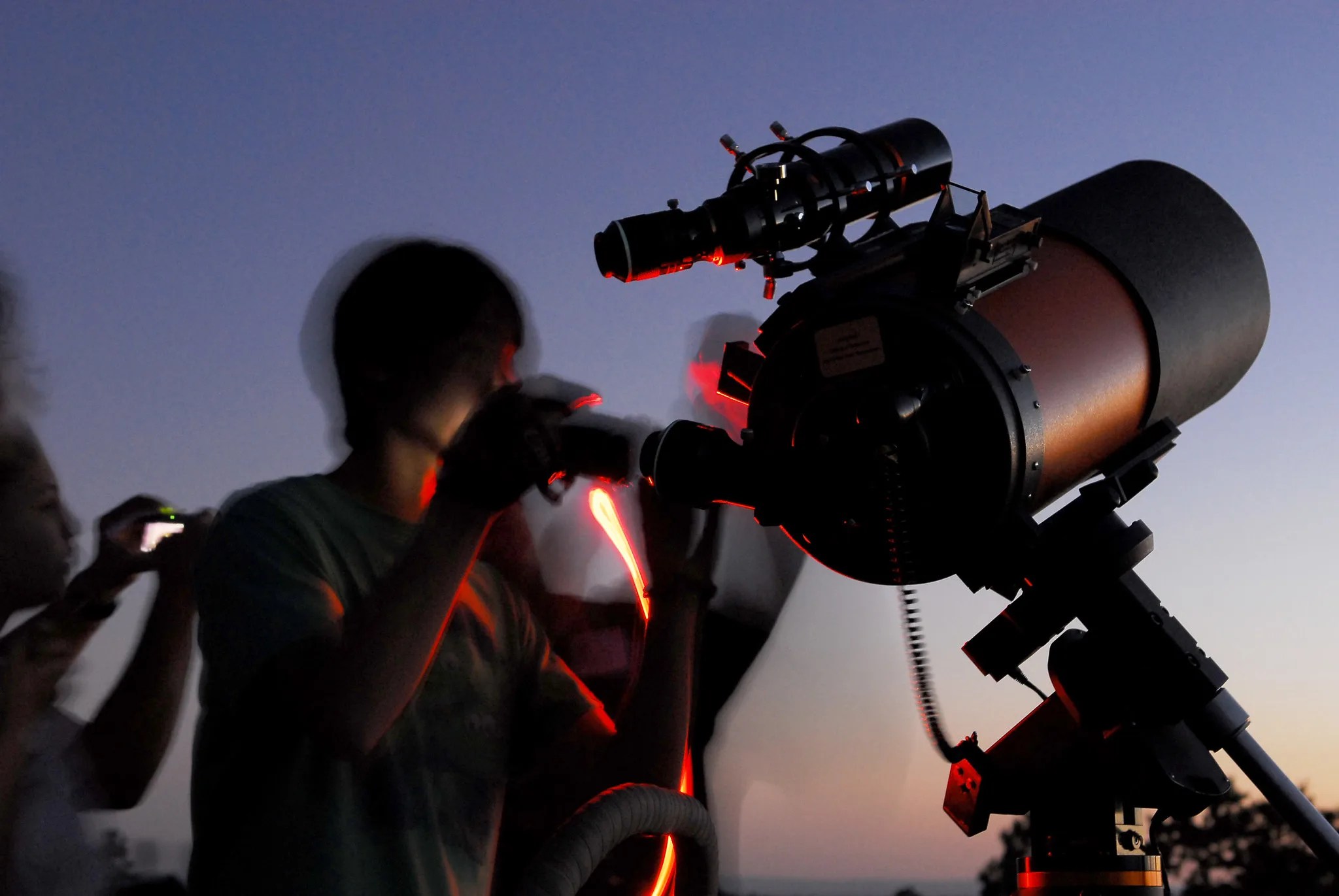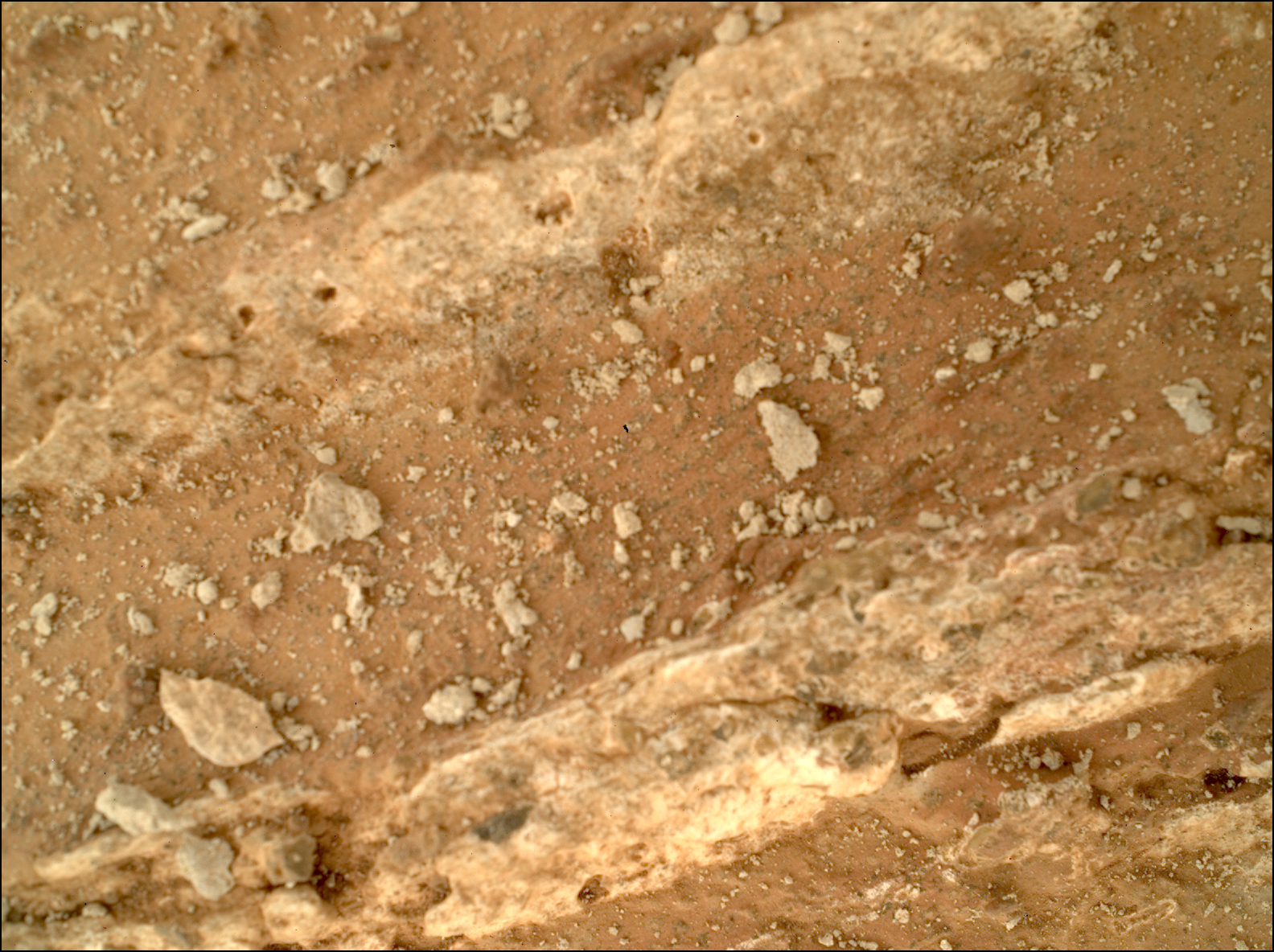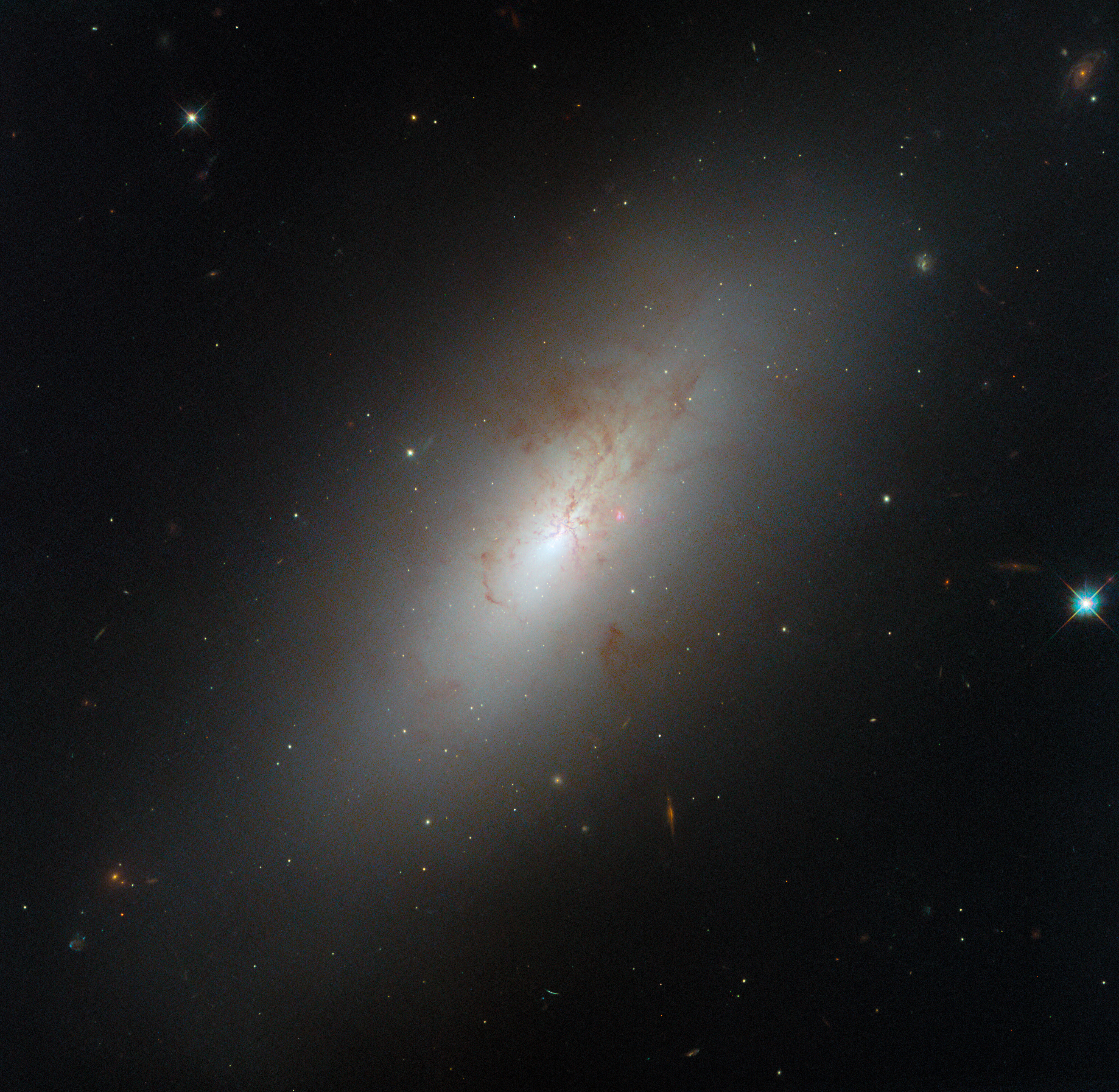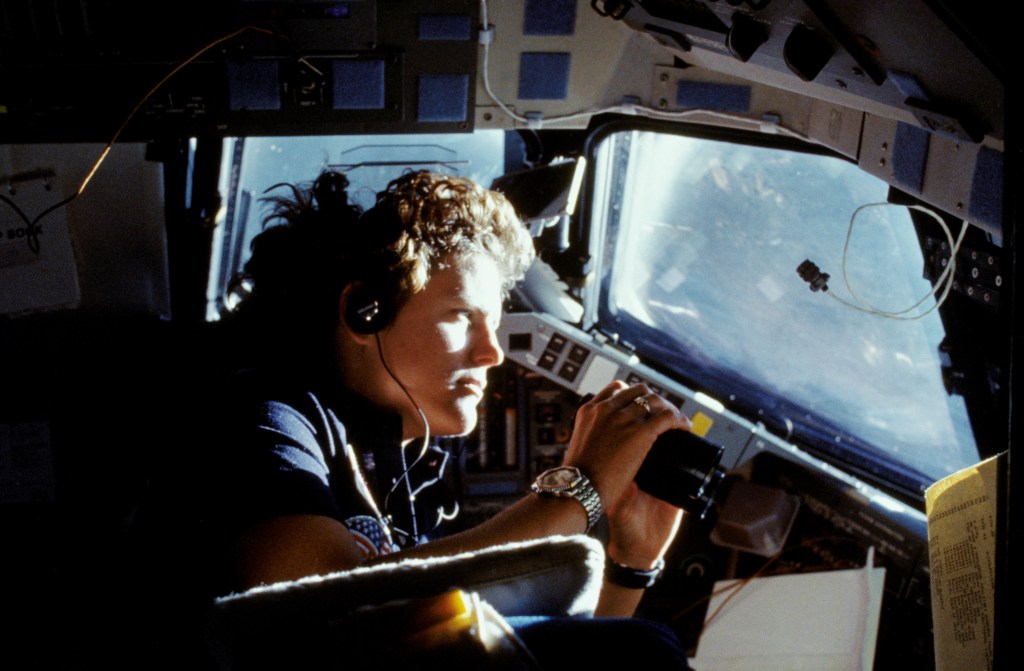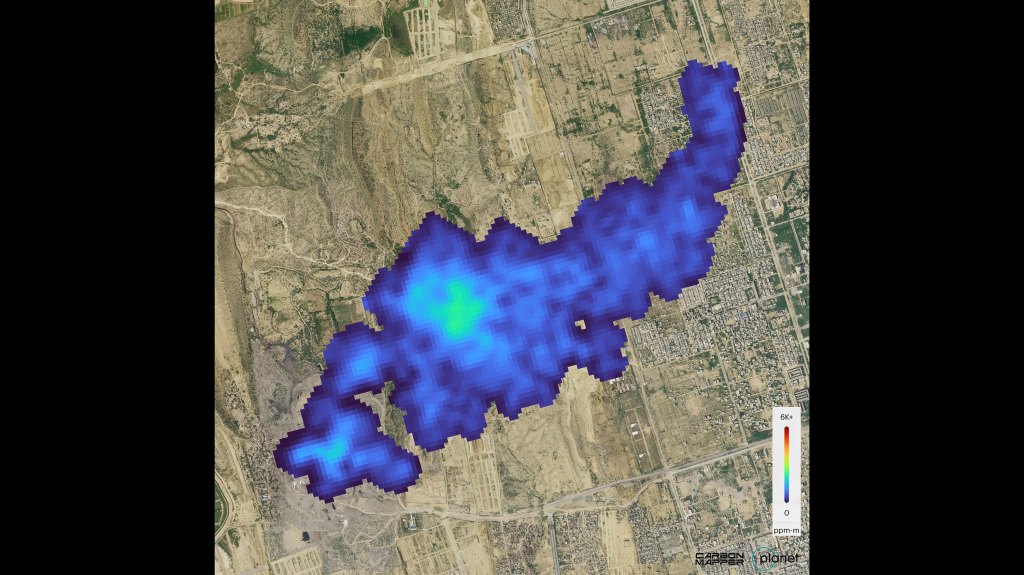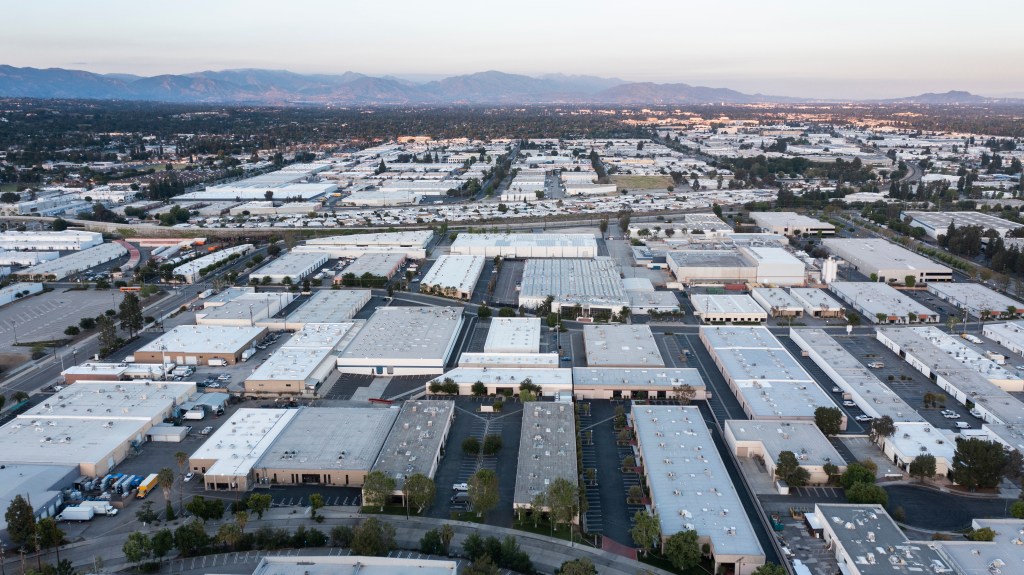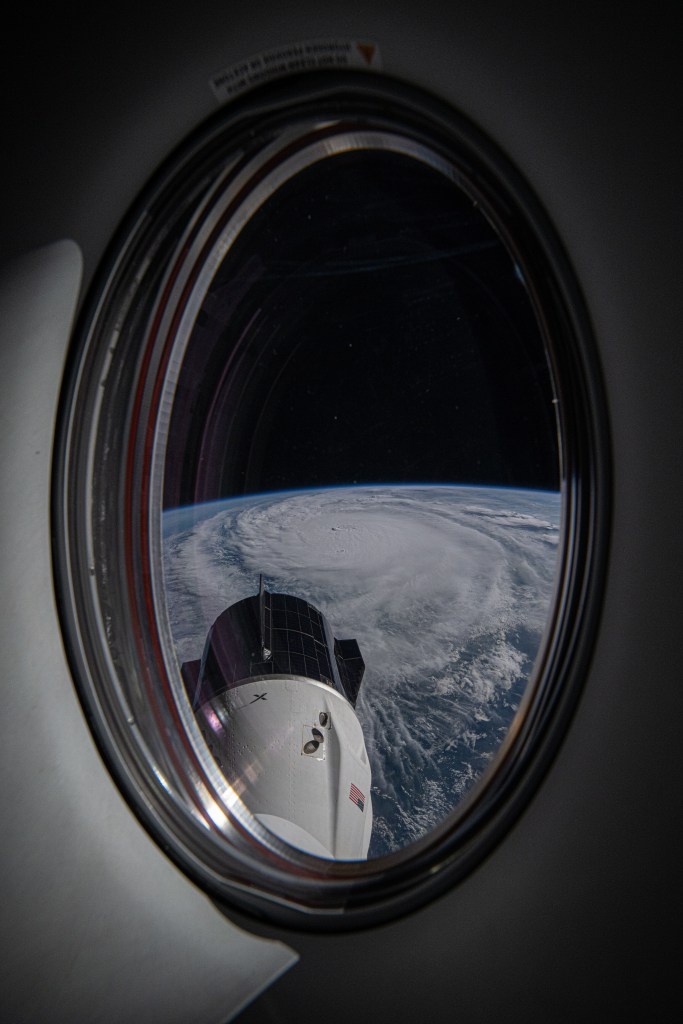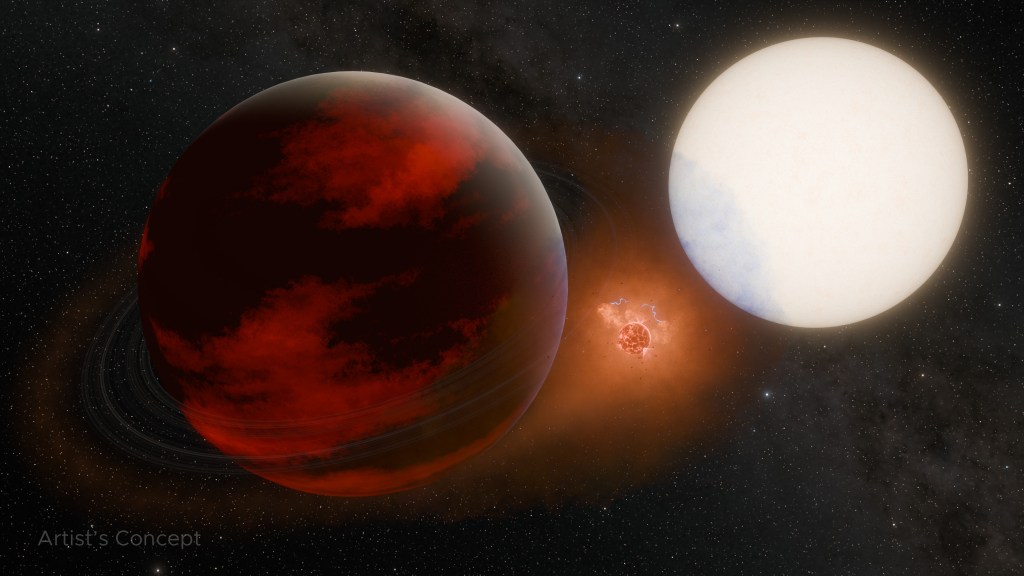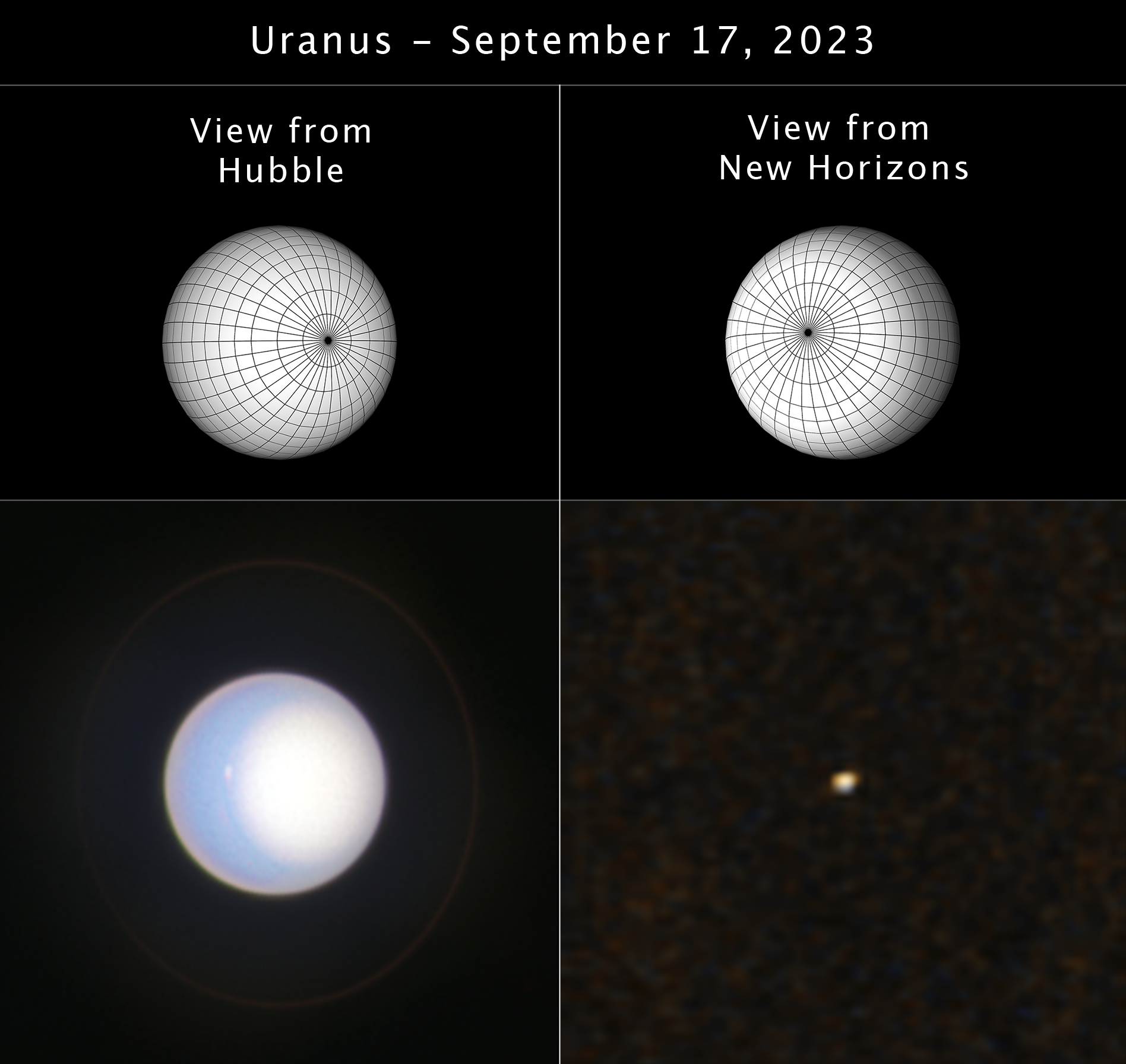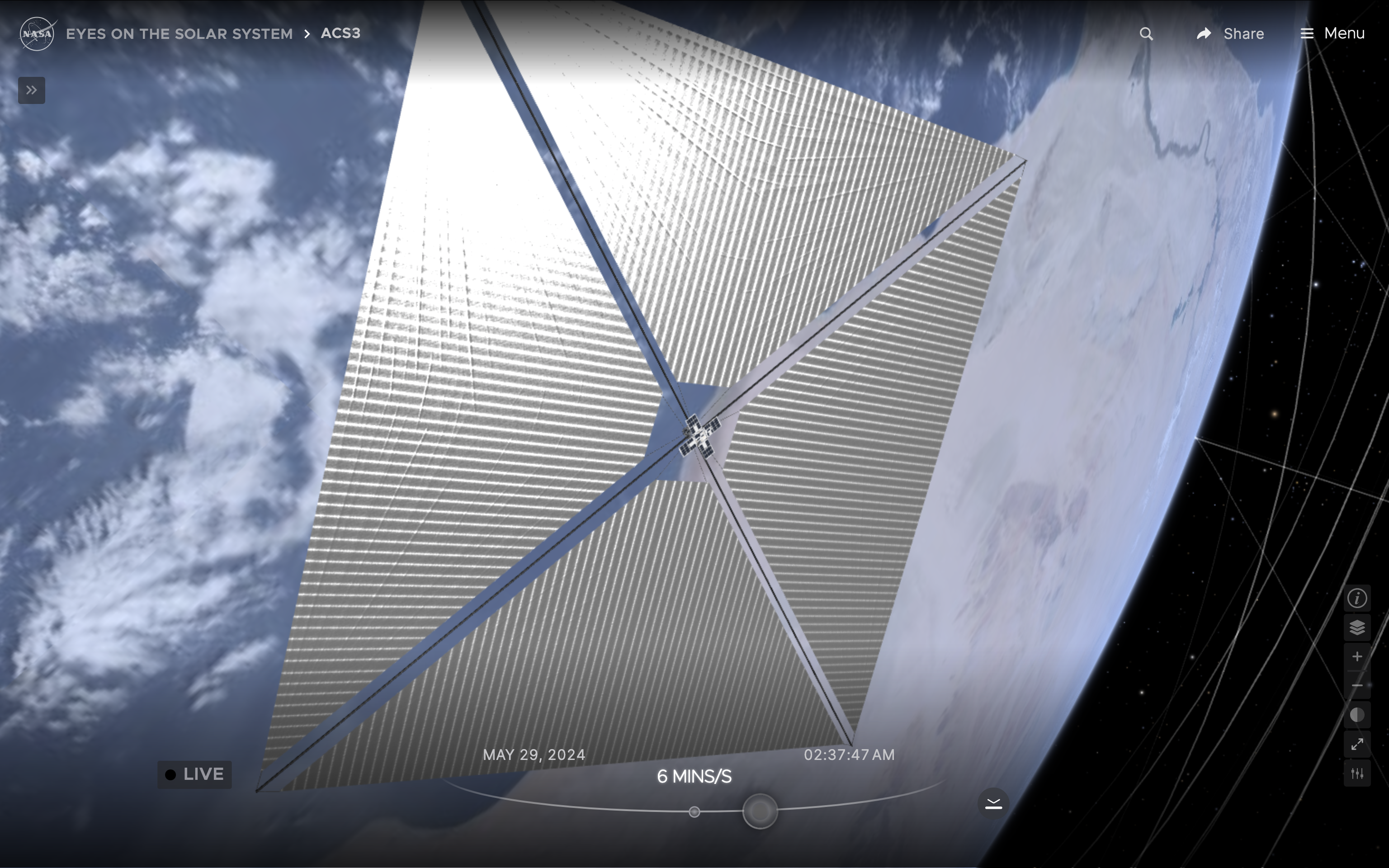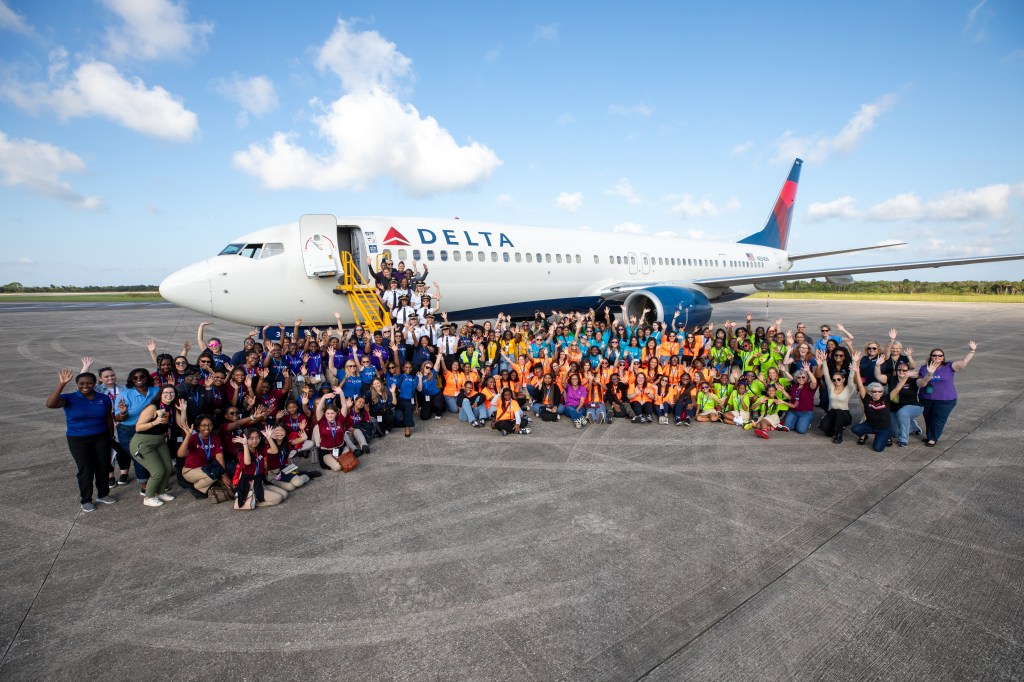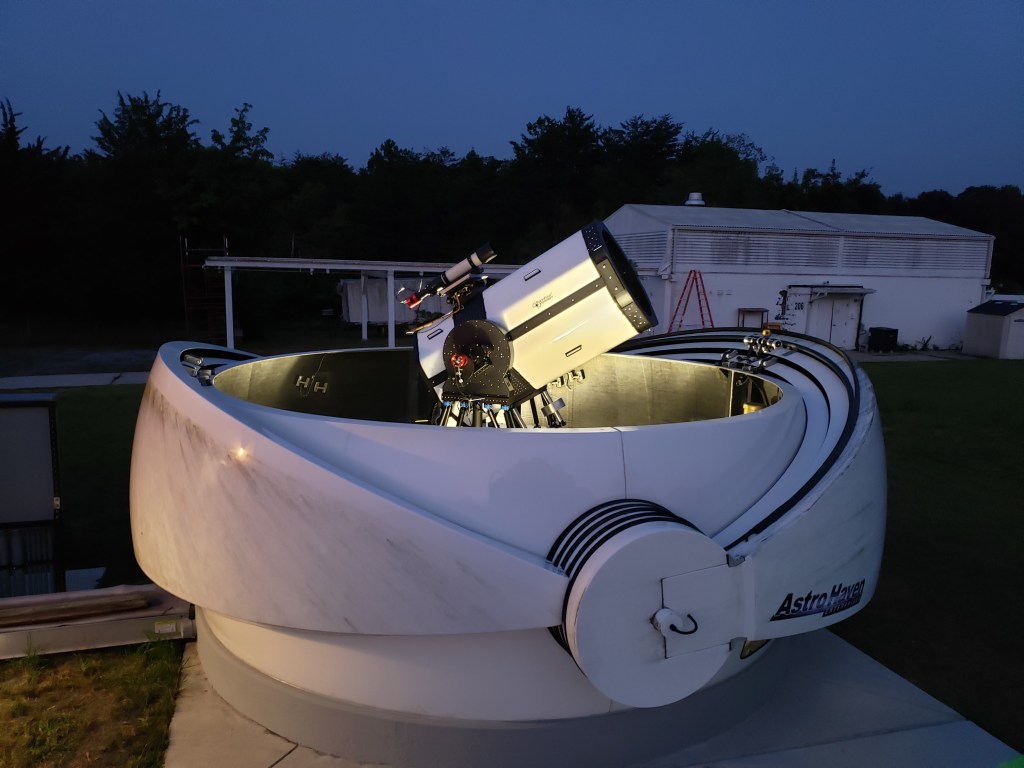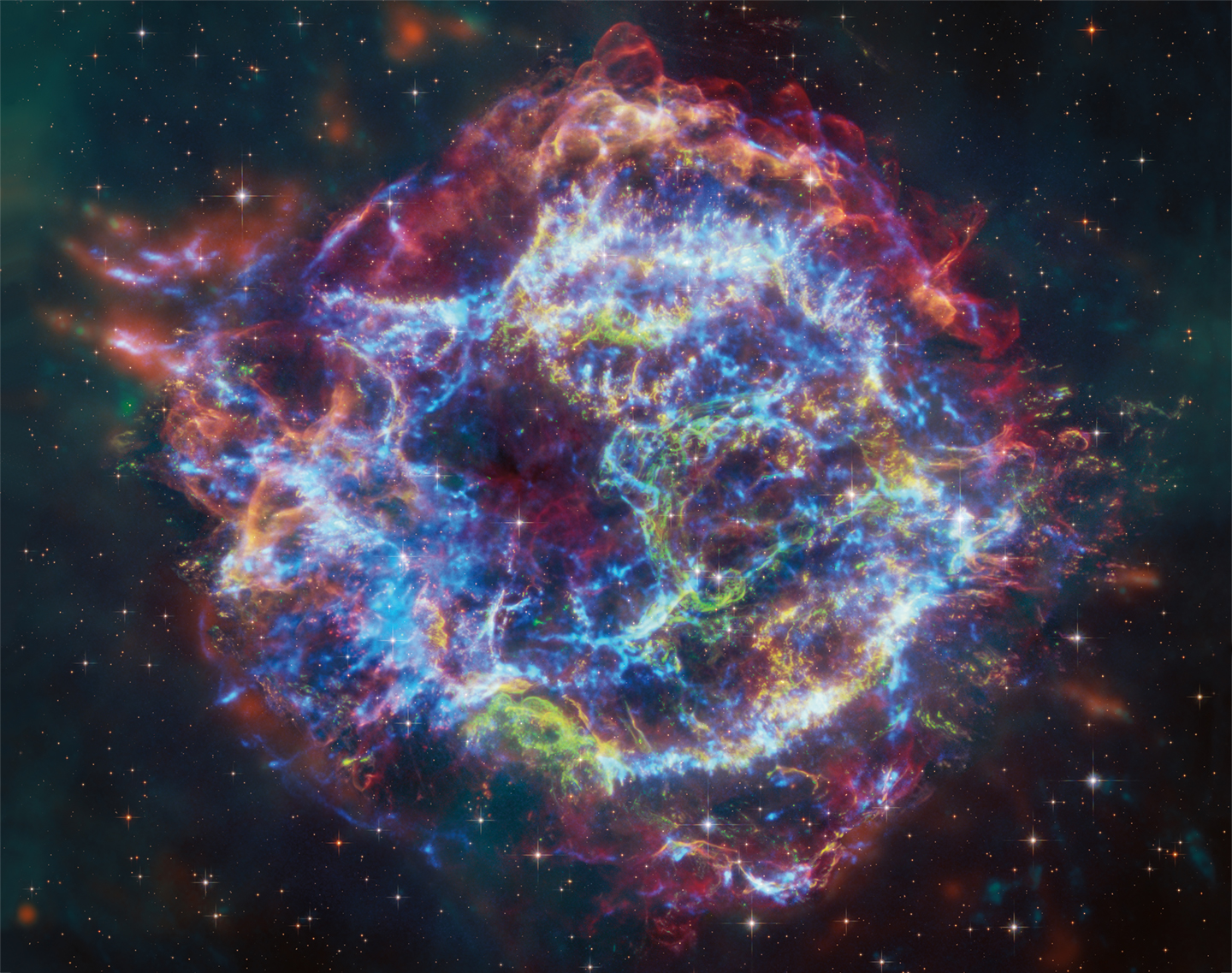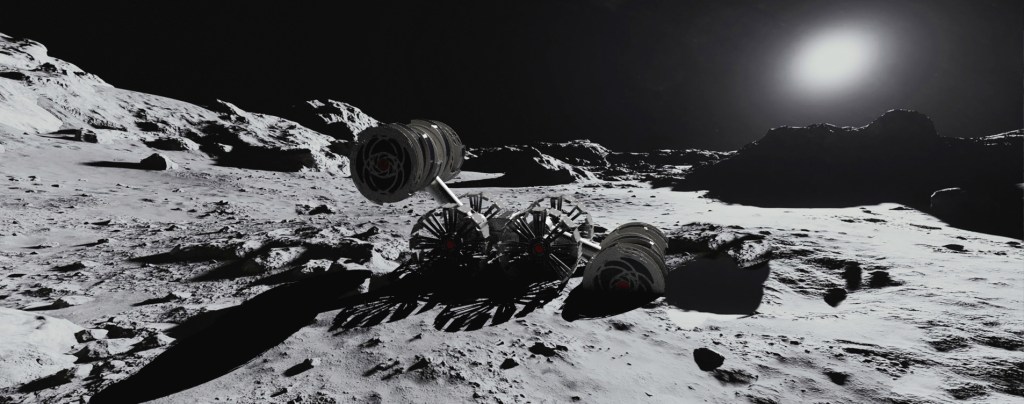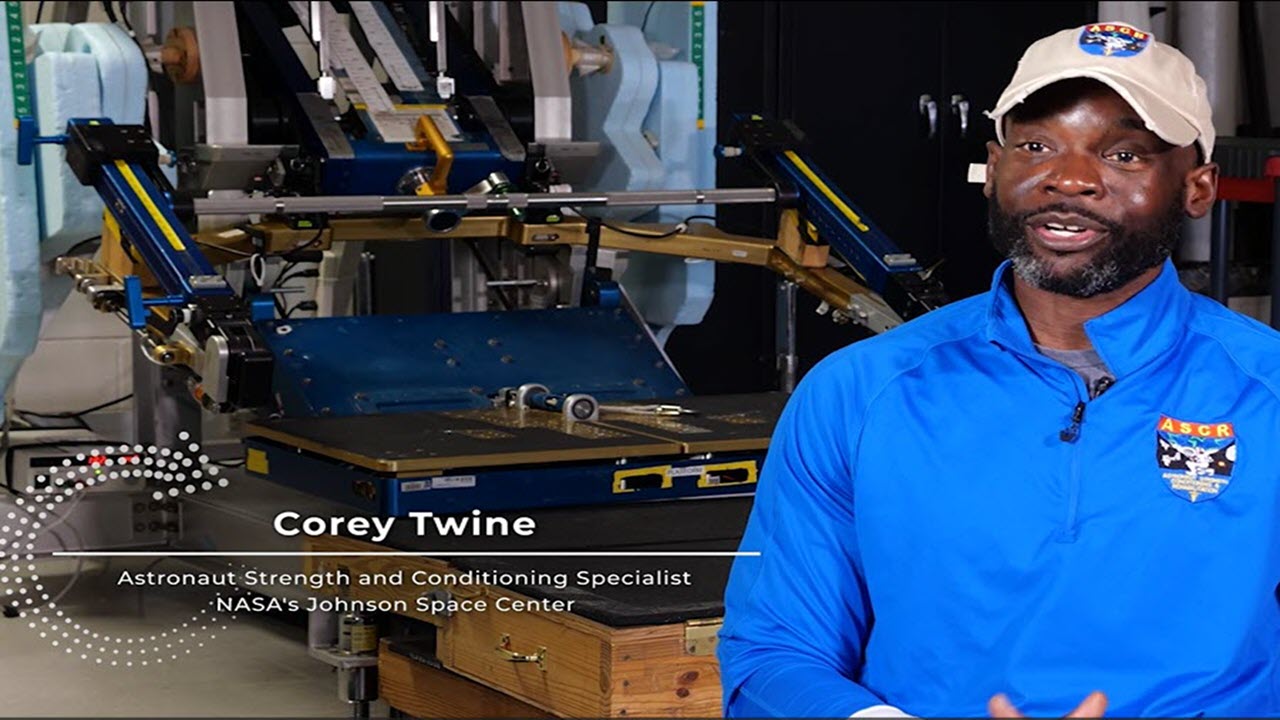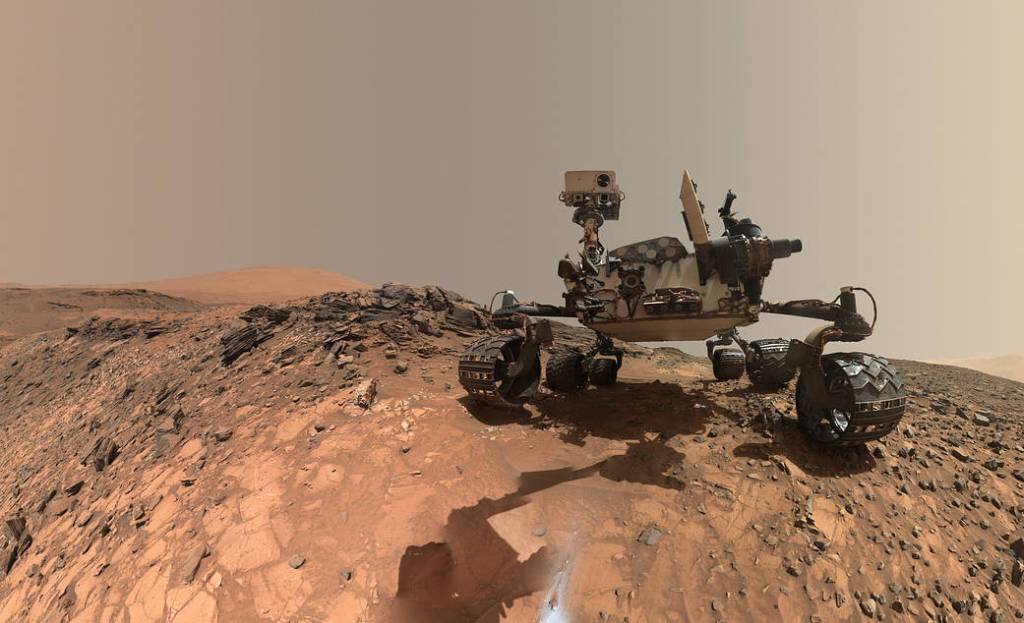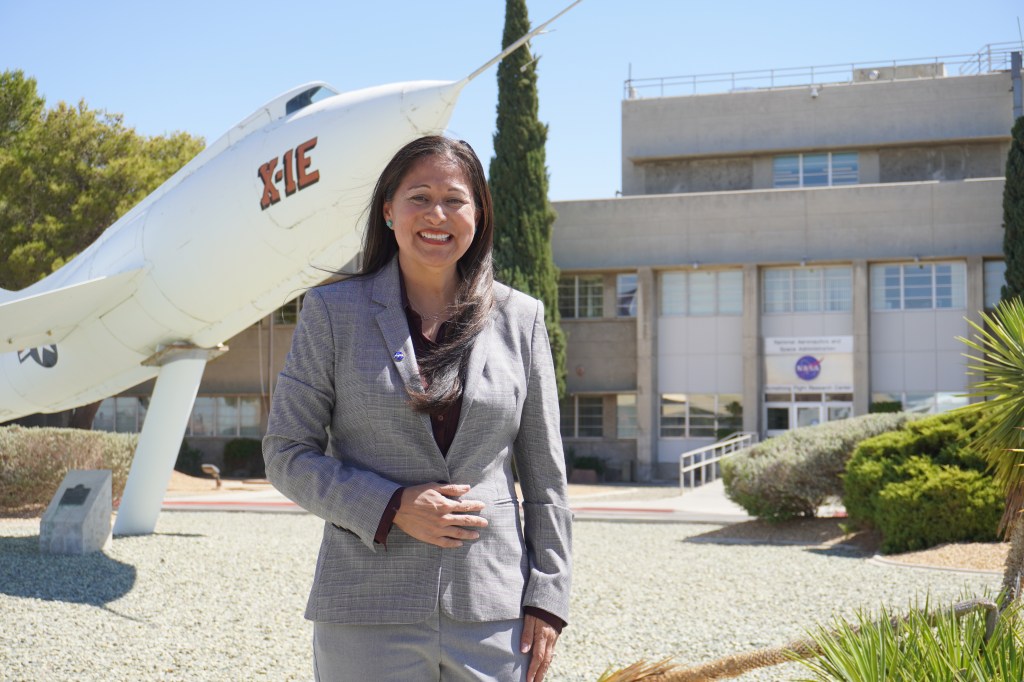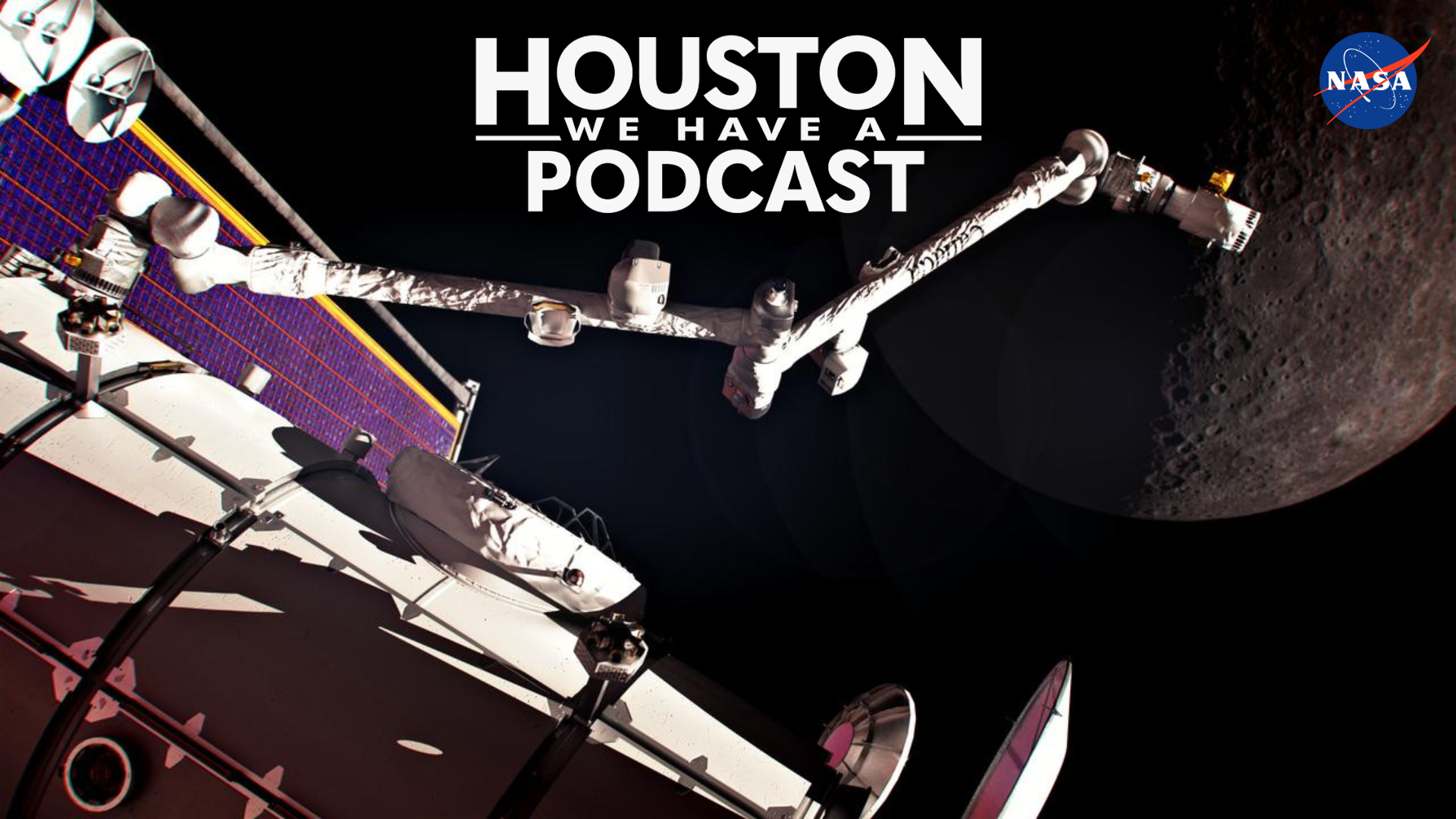
From Earth orbit to the Moon and Mars, explore the world of human spaceflight with NASA each week on the official podcast of the Johnson Space Center in Houston, Texas. Listen to in-depth conversations with the astronauts, scientists and engineers who make it possible.
On episode 352, a Gateway manager and a CSA astronaut discuss how commercial cargo missions and robotic systems will be vital for sustaining the future lunar space station. This episode was recorded on August 9 and 21, 2024.

Transcript
Host (Kenna Pell): Houston, we have a podcast! Welcome to the official podcast of the NASA Johnson Space Center, Episode 352, “Gateway: At Your Service.” I’m Kenna Pell and I’ll be one of your hosts today. On this podcast, we bring in the experts, scientists, engineers, and astronauts, all to let you know what’s going on in the world of human spaceflight and more. This is our third installment of our Getting to Know Gateway series and in this episode, we’re diving into what we are fondly calling the “Gateway helpers,” the logistics spacecraft that will fly to Gateway to replenish its science and other supplies, and the robotic helpers provided by the Canadian Space Agency. First up: logistics. Think of this as the deep space supply chain that will deliver science and supplies to Gateway ahead of each Artemis crew arrival. These important deliveries will keep our astronauts supplied and help NASA do the science to help prepare for human missions to Mars in the coming years. While the Gateway program is managed out of Johnson Space Center here in Houston, Kennedy Space Center in Florida is responsible for leading the commercial supply chain in deep space. This includes transporting supplies like food for the crew, science experiments, and hardware for exploration of the Moon. And that’s where our first guest comes in. Mark Wiese is the manager of the Gateway Program’s Deep Space Logistics at Kennedy. There’s a lot to unpack, figuratively and eventually, literally. And after my interview with Mark, stick around as we hear from host Courtney Beasley who chats with Jenni Gibbons, astronaut for the Canadian Space Agency, or CSA for short. They’ll talk about how CSA robots will lend a helping hand on Gateway. Let’s go.
[Music]
Host: Mark, welcome to the show. And you know, I did a quick Google search and I’m surprised I don’t think you’ve been on Houston We Have a Podcast yet.
Mark Wiese: I don’t think I have either. Might be the first time.
Host: Okay. Well, welcome. And I know you’re a great communicator of all things NASA and Gateway, so I’m really excited to get into this.
Mark Wiese: Thanks for having me. I’m excited, too.
Host: So, Mark, your official title at NASA is Manager of Deep Space Logistics, or DSL for Short, which we’ll call it on this podcast. You’ve been working on Gateway for several years now, or even from its start. We’re going to dig into DSL here in a second. But first, I know our listeners would love to hear about your background. How did you get into NASA and then into Gateway?
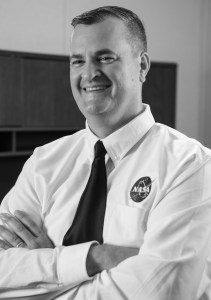
Mark Wiese: I feel like I lucked out getting into NASA. So I’m a New Yorker, born and raised, like an hour north of the city. Never really anticipated I’d be working in the space industry. Favorite movie was Top Gun that kind of inspired me to follow a career or an education path in aerospace engineering. And I made my way down to Florida Tech, had grandparents that were snowbirds and kind of looked to those changes in latitudes, changes in attitudes in Florida. It was senior year that I lucked out and took a class called Small Satellite Design that was a couple schools all getting together at the Kennedy Space Center. And, and that really opened the door. I landed that first job actually in Houston at the Johnson Space Center after I graduated. So I was working in the space station MER, the Mission Evaluation Room. And I got there about six months before we launched the first crew to the space station. Spent a couple years in Texas, eventually made my way back to Florida and was lucky enough to work space shuttle. Got to work the Launch Services Program. Some of the rockets when Atlas V was coming on board. Got my master’s along the way from UCF, I know there’s a shared interest there, Kenna.
Host: Go Knights.
Mark Wiese: Go Knights, charge on. Masters from industrial engineering there with a focus on program and project management, which I think helped set the stage for getting to this point. Eventually made my way to Deputy Director of Safety and Mission Assurance at Kennedy. And then in late 2018, got a phone call from our then Center Director, former astronaut Bob Cabana, about helping stand up this new program called Gateway.
Host: Very nice. And I have so many questions. Wait, did you like the second Top Gun or the most recent Top Gun?
Mark Wiese: Heck yeah. I loved it and I’m excited for the third.
Host: I didn’t know you went to Florida Tech. I know we had the shared interest in UCF, but Florida Tech, oh, that’s a great school down there in Melbourne on the Space Coast. What was your experience like there?
Mark Wiese: It was great. You know, it’s great to get away from home. I really wanted to prove I could be independent and figure things out on my own. But, you know, there’s a great mix of universities here close to the space center and it just really emphasizes how having tight ties to, you know, high tech industries like that when you go to school really helps open the door. And I give a lot of credit to being able to be that close and get some exposure to the space program.
Host: Right. And you’d mentioned the small sat class, did your satellite or CubeSat, if CubeSats were a thing then, did it make it, did it make it space?
Mark Wiese: Yeah, so I had no clue what I was getting into. I had an international student friend from Trinidad and Tobago that pushed me to take that class. And I’m so thankful for Nyron if he’s out there ever listening. We took this class, didn’t know what we would be doing, and we actually built a small instrument package. It was, it was pre-CubeSat era and we launched it on a weather balloon from the then Air Force Station. Now it’s a Space Force Station. So it didn’t actually go on a rocket, but we got to, we had a camera and a GPS transmitter and we launched this weather balloon and got to track that and it really helped open my eyes to, hey, maybe I can work in the space program.
Host: And I’m so glad you said pre-CubeSat. Cause that was not an age thing. You know, I just did another episode on all things CubeSat and so the nomenclature and stuff like that came about, you know, I guess fairly recently in all things space. Last but not least, I did not know you started at JSC, which is so funny because we’ve kind of switched, right? I was at KSC, I came to JSC, you were at JSC, now you’re at KSC. And speaking of that, typically, we have most of our guests here in house, with Mark, you know, you’re over at KSC and so we’re doing this virtually, but, so this is not that random of a question, but as a Space Coast native myself, I can’t help but ask most Gateway is housed here at JSC, the program and the power and propulsion elements managed out of Glenn in Cleveland. But Mark, you and the DSL project are at Kennedy Space Center in Florida. And why KSC?
Mark Wiese: Yeah, so first off, it was really neat, you know, starting my career on space station and, you know, being an East Coast born and raised person and eventually making my way back to the East coast. I remember talking to my bosses in Houston about how even though I want to go back to Florida, I’d love to find some way to make sure I keep tying the, you know, the Kennedy Space Center together with that human space flight program. I was getting to work in Houston, so it’s really crazy to see your career come full circle, you know, over 20 years later. So Kennedy, I don’t think a lot of people realize, or it doesn’t always get credit for this, but it’s really the center that is the start of commercial space for the agency. So in 1998, the agency made a decision to move some launch vehicle work that was happening at the Glenn Research Center, at that time it was Lewis and the Goddard Space Flight Center for the science and robotic spacecraft side of the house. And they moved and consolidated the launch services business at the Kennedy Space Center and stood up the launch services program in 1998.
So there’s really a long history at Kennedy of trying to learn how to do commercial contracts. Eventually, when you saw the, you know, the Commercial Crew Program now is kind of jointly led between the Kennedy Space Center and the Johnson Space Center. We got a great partnership there and kind of can help each other with the human spaceflight experience of JSC and the commercial experience that Kennedy’s got.
So for Gateway, you know, NASA Headquarters was starting the formulation process and they made the decision to, to give that work to Kennedy. And as that was told to me it was, “Hey, let’s go recreate that cargo resupply, the CRS missions, that go to ISS,” but they wanted us to do it a little different. They wanted us to really pull in the best of the Launch Services Program’s contracting abilities, because there was a vision that we would, as we move out to the Moon, they wanted this contract to be set up to not just bring a cargo module every time, but have the ability for us to kind of morph this vehicle a little bit and, and make it look kind of how we move cargo terrestrially here on the ground. So you’re driving on the interstate and we’ve got tractor trailers constantly, right? You know, a truck in the front, pulling a big cargo module on the back. That’s really what we do with commercial resupply to ISS and what we’re going to do to go to Gateway. But they wanted the ability for us to sometimes take that cargo module off and leverage that spacecraft bus, that cab, for the 18 wheeler to be a flatbed and bring up some other element or bring up another piece that can help us do different things and maybe eventually even a refueler, you know, a tanker truck just like we see logistics moving around here on our highway system.

Host: Great conventional examples, cab to be a flatbed and I like how you kind of differentiated how the DS model’s a little bit similar but different than what’s being done for ISS cargo resupply missions. And I wanted to ask, are there any other efforts of shipping cargo or supplies to the Moon, such as, is NASA working with private companies to ship things currently?
Mark Wiese: Yeah, so the Commercial Lunar Payload Services contracts, that’s obviously a first step that started under the science mission director at NASA focused on getting instruments out to the Moon and really a great on-ramp for newer and smaller companies to enter the market where NASA can take a little bit more risk. So that’s underway. We, you know, got a Houston company that had a great first mission with Intuitive Machines here this year. So that’s kind of the startup and what we’re really set up with in Deep Space Logistics is where we can’t tolerate that much risk. Where we’ve got to make sure, you know, it’s not a shots on goal approach, but it’s a, hey, our crew’s going out there and we’ve got to have these supplies, you know, critical supplies delivered and ready to go.
Host: Okay. So when the time comes and NASA needs things launched to the lunar surface and then of course that makes sense that we’ll need it for the orbiting laboratory around the Moon. That leads to the next question. The Deep Space Logistics spacecraft, when it lifts off from Earth, which at Kennedy, what’s going to be inside of it?
Mark Wiese: Yeah, so we kind of bucket everything into three main groups. There’s utilization, so that’s all the science, the experiments that we’re going to go do to leverage this new platform out there in sis lunar space. Another bucket of things could be outfitting, you know, there’s different equipment that might need to be permanently installed on Gateway that we just didn’t have the room or the ability to install originally that we have to update or maybe there’s some spares or some upgrades we need to make along the way or there might be really significant hardware like a spacesuit that the crew needs that we can’t fit in Orion and we need to have the ability to bring that up for them. And then the third big bucket is really the supplies or the consumables, you know, the food that our astronauts need to have that full duration during their stay or extra clothes or other equipment and things that they need to be able to have a comfortable stay while they’re up there for a month.
Host: You know, it really sounds like you worked in ISS before. It’s cause you have, and it sounds so similar to our cargo resupply missions now just, you know, 250 miles above versus the first orbiting lab around the Moon. But a little bit about logistics. How often do you think that the cargo resupply or the shipments would be proposed? Maybe once a year, more or less?
Mark Wiese: Yeah, so we’re working towards that once a year. You know, right now with Artemis, the plan is an annual mission with Orion to get four crew up there to the Moon. And the plan is, we built this spacecraft and our requirements for this spacecraft around four crew being able to have what they need for a 30 day stay. Si with Artemis planning that annual cadence, our plan is just before they launch the crew, we would put this shipment of supplies out there and pre-stage it and have it ready for them to go. And then as we grow and evolve with Artemis and Gateway, we’ve got longer stays. We may need additional ships up there to allow us to stay longer than 30 days.
Host: No, that’s really interesting. And, you know, thinking about trajectory, and I know even on a previous episode we recorded about the total solar eclipse, I know those even go into planning emission of the Moon and trajectories and stuff like that. So how often would you have the windows of opportunity to launch these cargo resupplies?
Mark Wiese: Yeah, that’s a great question. And when we set up the requirements for this, we were really careful to think through that because there’s a lot of evolution happening in the commercial space world. You know, those first modules for Gateway, HALO, the habitation and logistics outpost and PPE, the power and propulsion element. PPE is leveraging solar electric propulsion, which is a great sustainable solution, but it’s also a slower solution. So we were careful when we put out our requirements to make sure we weren’t telling commercial industry exactly what we wanted. We wanted to have creativity in how they proposed. So in the event someone wanted to lever solar electric propulsion and it took a longer while for the launch availability and the transit time to get out there. We wanted to be able to have them propose that, but we also wanted the flexibility to get something up quicker cause our ISS experience tells us there’s always something that we need to manifest on this cargo vehicle at the last minute.
So launch and transit, we have two kind of categories, we say there’s regular or slow transit and there’s a fast transit. Right now, with a chem prop solution, slow transit gives you more launch availability, lets the rocket do different trajectories to kind of trade how high of an orbit that puts you in. But that means it could take three months to get out to the Moon. That’s not really the baseline we’re planning for. We’ve got a fast transit capability as well where we kind of limit our launch availability a little bit more, but we still got plenty of opportunities and plenty of flexibility and then that’ll get us there in less than 30 days. In the case of our first provider, we’ll get there in a couple days.
Host: I have a follow up question on that. So how, I guess if you’re sending different science, right? Cause a lot of Gateway of what it is going to be a lot of science taking place there around the Moon. And so would you typically be looking for the fast transit for that to preserve power for science investigations?
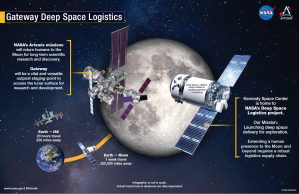
Mark Wiese: So science, most of the science we’re looking at is to take advantage of the environment being all the way out there at the Moon. So actually, the transit time, that they could do science during the transit, but I think they’re really excited about just being out in that environment. So it’s less about the time to get there and more about being in that environment. And we actually may be able to do some of the science even after we depart Gateway and we’ve been talking a little bit with the science teams about that opportunity that once we have actually undocked and they’re done with our Gateway mission and done with removing trash for the crew, we’re actually going to go put the spacecraft in a disposal orbit. But there’s an opportunity to keep doing science after we leave, and I think there’s a lot of excitement from the science community about that opportunity as well.
Host: Got it. Got it. Okay. And last but not least is this is very similar to space station and I think you’re describing it in a way that really makes sense and it’s really helpful. Do we have to have crew on Gateway to receive it? Do these cargo shipments, Deep Space Logistics, does this dock autonomously? Is there a birthing capability with say on our next section of this podcast with the Canadarm?
Mark Wiese: Yeah, so another great question. We put our requirements out from the start that this would be fully autonomous. So, we actually are power independent, thermal independent and have to have autonomous docking capabilities. That’s one of the big advantages of what we’re doing out there and, and what we’ve taken from ISS and all the learning that’s happened here in low Earth orbit to really allow us to push this platform for astronauts to live on so much further away. So our plan would be to dock this before the crew even gets there and have it all posed and ready to go. And when they get there, all they’ve got to do is open the hatch and there’s their beautifully organized closet of all the supplies they need for that mission.
Host: That’s awesome. Okay. And I did say last but not least, but this I promise last but not least on logistics wise, even though I could talk about this all day, this is really cool. You did mention disposal, so undocking, and is there a chance of any of the science returning, at least maybe on the first few missions? Are you looking at that in the future?
Mark Wiese: It’s definitely a chance in the future. Right now, we’re looking at the spacecraft would be disposed, we’d put it in a heliocentric orbit and it maybe keep doing some science and eventually, you know, demise of itself and not come back home. But return is really important for Artemis, right? We’re going down to the surface and we want to get that experimental data from the Moon back to Earth. So we’ve done studies early on already where we’ve looked at things. The agency has done missions like OSIRIS-Rex where they have small capsules that bring things back to Earth. We’ve done some studies on that of could we put, you know, a capsule on the end of our spacecraft so that after we undock we could send something home. So we’re looking forward to studying things like that. And then if you look at what SpaceX is doing right with their development of Starship, eventually when that vehicle is fully operational, we may be able to bring our whole spacecraft back home, which would really, you know, increase the volumes of and the mass of what we could bring back here to Earth to keep studying. Another neat thing that would be cool to see is, you know, maybe someday we can get this module and start to see a commercial supply chain that’s really vibrant between cislunar space and low Earth orbit. So if we could just get it to the low Earth orbit and then start to connect with comm LEO platforms and connect with a vibrant commercial access to space that might be going on by then in low Earth orbit, we may really start to connect all the hub and spokes of this commercial supply chain.
Host: There is so much to look forward to and I love how when people think of Deep Space Logistics spacecraft, they think of supply chain. One other thing I wanted to ask, does the Deep Space Logistics module have the opportunity for exterior science payloads?
Mark Wiese: It absolutely does. So we label these two groups, you know, we call things pressurized payloads, so that’s everything on the inside. So that’s the pressurized volume the crew can enter. We’ll have that very well-organized closet with payload racks and the supplies and the utilization and maybe some flexible space. But then we’ve got ability to put external, unpressurized payloads on the outside of the spacecraft or this truck that’s bringing things out to Gateway. And what’s neat about that is our friends in Canada are coming up with round three of external robotic systems, right? They supplied the space shuttle, the space station, they’re going to do the same on Gateway. So we’ve got the honor of delivering that system when it’s ready and then that arm will be able to, you mentioned birthing before, you know, it’ll be able to grab payloads that are docked on the outside of our spacecraft and unhook them and bring them over and permanently birth them on Gateway so that we can use Gateway as a permanent science observation platform and we can use logistics to trade out those different science experiments that we put on the outside of Gateway over time.
Host: That was the perfect lead in for the second half of this episode on all things robotics and to close out this section on everything logistics, bigger picture, Mark, what are you most excited about when it comes to Gateway?
Mark Wiese: It’s the international partnership piece. You know, I mentioned I got to start my career in Houston, work in ISS and really getting to see us build up that capability with our commercial partners, with our international partners. And now the fact that we’re getting to do that again out at the Moon, so we mentioned the Canadian Space Agency, we’re working closely with the Japanese Space Agency. They’re working on a Deep Space Logistics cargo vehicle as well, the HTV-XG. So we’re excited to see that eventually come online and start to increase the capabilities of getting supplies out to the space station. And really it’s just this big honor of what the U.S. government is doing by making an investment an order of magnitude further away and trying to duplicate what we did here in low Earth orbit where we got to see regular companies that impact everyday people today starting to do science in low Earth orbit that’ll make life better here on earth. And now we’re going to go pull that all the way out to cislunar space and we’re going to do it with our international partners, which is really cool.
Host: It’s so exciting. Mark, thank you so much for joining us today and talking all things Deep Space Logistics and bringing it to a less deeper level for us all to understand. This has been really awesome talking with you.
Mark Wiese: Thank you Kenna, thank you to all listeners that are helping champion us along the way.
Host: Alright, well Jenni, for the first time ever, welcome to Houston We Have a Podcast.
Jenni Gibbons: Thank you so much. It’s a pleasure to be here.
Host: So with this Gateway series, we get to talk about all of the first with the lunar space station, but we also have had a lot of first time guests on this show and I think that makes sense because Gateway is so unique and it really represents the future. So it’s great to have you here and we’re going to dive into all things CSA and Gateway. So let’s get started. I wanted to start with your background. Can you start with telling us a little bit about where you grew up and what your childhood was like?
Jenni Gibbons: Absolutely. So I grew up in Alberta, in Canada, so kind of the middle west of the country and I felt so fortunate growing up. I still feel very fortunate to be from a place like that where the outdoors was just so accessible to me. So some of my key, and I would say favorite, childhood memories are really being outside. We’re very close to the Rocky Mountains where I grew up. So I felt very fortunate being able to just explore the outdoors, really appreciate Canada’s land and being able to look up and admire everything around me.
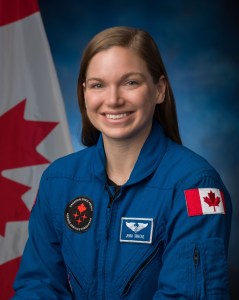
Host: Are there any experiences from growing up that you think played a role in where you are today?
Jenni Gibbons: Oh, absolutely. I think that being outside and really cherishing and loving the place that I was from, but also wanting to learn more about it really sparked a lot of creativity and desire for exploration and learning. And I was very, very fortunate that my family really encouraged that. So certainly, that is very present in what I value about my work now.
Host: So at what point did you realize that you wanted to become an astronaut?
Jenni Gibbons: Well, I think I wanted to be an astronaut when I was really little. Like I have, I’m very fortunate my mom saved like these like crafts that I made at a science center. One is like a little rocket ship that I made when I was too young to do anything. I’m sure I had a lot of help with that. But I wanted to be an astronaut when I was really little and I think a lot of that was again, really liking being able to explore and liking science. I didn’t maybe didn’t really recognize it as science at the time. I was young enough, but also, we had some really phenomenal role models in Canada as you do here in the states. So I was only a couple years old when Roberta Bondar, the first Canadian female astronaut flew in space and I maybe didn’t recognize the significance of that at the time, but my mom really emphasized it. So a couple years later when she returned we went to see her speak and it’s again, another really early memory about being fascinated by space and being very grateful to be from a spacefaring nation
Host: That’s so special. So take me back to when you were selected by CSA as an astronaut. What was that like? Is it pretty similar to the process here at NASA?
Jenni Gibbons: I think because Canada selects fewer astronauts, our selection process does look different. For instance, Joshua and I are from the most recent Canadian class, which was in your 2017 class, so there’s been a NASA class since then. So our selection process does look a little bit different. It takes a year, but we’re testing for very similar things. So operational capability, expeditionary skills, teamwork, followership, a lot of the same, skill requirements or I guess, desires that you would have in the NASA selection, but I’m sure there are like some key differences. It would be really interesting to look at both of them in detail.
Host: So what was that selection process like for you? How did you find out you were selected?
Jenni Gibbons: Oh my goodness, thinking back. So at the time I was living in England, I was a brand new professor in an engineering department over there. I really loved my job, similar things about my job, really being on the cutting edge of what we knew, being able to explore. I loved the communication element of my job and working with students. I just adored it and I wanted to be involved in, again, that fascination of being from this country that was fortunate enough to be space faring and really valuing Canada’s space program. I just wanted to be involved. So I went through the recruitment process with that willingness to just dive in and meet the other Canadians who were interested in the process and it just kept progressing and I kept learning more about myself and the process and then all of a sudden we were in the finals and I was just so fortunate to be there and I got the call when I was in England and I think two months later I had packed up and had relocated and was starting my first day in Houston. Must have been, yeah, two to three months later. So it was wild, very fast and really, really cool.
Host: That’s so exciting. And that’s also so fascinating because I think that a lot of people assume being an international partner astronaut that you still live in your respective country, but you’ve been in Houston for quite some time, right?
Jenni Gibbons: Absolutely. So, I do get that a lot that people of course would think that you are based in your home country, but through the international partnership with NASA that we value so much, we’re actually stationed here in Houston, many of us, not all of us. And that’s where we undergo our training but also do a lot of mission support roles to support astronauts who are in space, just like someone who would be in the NASA astronaut corps would do as well. So, my colleagues and I do live here.
Host: How has Houston been for you?
Jenni Gibbons: Oh, it’s been very good. I would say very different than any place I have lived before. Much hotter, above my melting point. But yeah, we enjoy it. We’ve definitely made it our home and again, like the community that’s here centered around this mission of space exploration and human exploration in space has been really special. So it’s a new home for us.
Host: And do you find that you do get to go back home to Canada quite often?
Jenni Gibbons: I wish I could go back more often. I truly love Canada and I love being able to share our mission with Canadians because we are, in a way, like a little bit separated and distanced from that. But every time we go back, being able to speak about what Canada is doing in space and what our international partnership is doing in space is really cool. So, I do get back to be able to speak to people and do events around the country, but I would love to be able to do more as always.
Host: Well we love having you in Houston as you know.
Jenni Gibbons: Oh, thank you.
Host: I’d like to connect some dots for our listeners between Canada and Artemis and the really exciting things that we have together in the near future, and I think you are the perfect person to help with that, especially because of your assignment as CSA backup for the Artemis II mission, backing up fellow Canadian Jeremy Hansen. So what all does this assignment for the Artemis II mission entail for you and what has it been like to be in the thick of training?
Jenni Gibbons: It’s a good question and so far, it’s been exceptional. We have learned so much already and we’re still a way away from that mission. At this point, we have six crew members assigned to the mission, so four prime and two backup. And our job is to learn all the details of the mission from development to execution. So that includes vehicle systems, orbital mechanics and trajectories and of course, flight objectives like manual piloting or lunar observation. So a lot of that has been not only learning those things but learning what the training for crews returning to the Moon will actually look like and preparing the foundation for the future Artemis missions and lunar landings. Along with that, really for me, it’s been about spending time with and getting to know and learn with the ground team. That has been really, really cool so far.
Host: So helping to plan for the future missions like you just mentioned. We talked a little bit before the podcast started, but you just got back from geology training with the Artemis II crew. What was that like?
Jenni Gibbons: Oh, that was such a highlight. That was a wonderful now memory, but just a wonderful experience in general. We spent some time in Iceland because it’s a wonderful analog for a lot of the lunar landscapes that the first crews that returned to the Moon will experience. It’s actually an Apollo training site as well. So the entirety of the Artemis II crew was there, both prime and backup, and we were there with a team of geologists and training leads who are looking at not only preparing us for lunar observation but preparing Artemis beyond for what it’s going to be like to be on the Moon. How do you describe what you see when you’re the eyes and really the voice for thousands of people on Earth who are listening to you describing what you see.
Host: And it’s my understanding that Canada’s spot on the Artemis II mission and future missions has a lot to do with Gateway. So I wanted to talk to you a little bit about that. Can you tell me a little more about Gateway?

Jenni Gibbons: Absolutely, and I love that you asked that because it’s a really cool connection to make. So Canada has committed to developing, delivering, and operating Canadarm3, which is a robotics system and it’s committed to the lunar Gateway station. So this is an autonomous robotic system to help with both science and space station maintenance, which is especially important because the lunar Gateway, unlike the ISS, will not be crewed all of the time. And through this contribution and our longstanding partnership with NASA, other international partners and also just recognition of that Canadian robotics expertise, we have secured a range of opportunities for Canada in return. So those include tech demos, commercial activities, science that we’ll do on the Moon and of course, astronaut flights. So two astronaut flights in particular. One of those is on Artemis II. So it’s been cool for me and again a great learning experience to see how investments in technology and science at a national and international level translate into something like astronaut flights.
Host: So I want to dive a little more into the robotics. Canada has been a player for human spaceflight for decades, of course contributing the Canadarm to the shuttle and to the International Space Station, which they still use a ton today. I just wanted to see if you could talk a little bit about Canada’s relationship with NASA and providing those robotics expertise.
Jenni Gibbons: Absolutely. So NASA and the CSA have a lot in common, shared missions, but they also really build on things that came before. So I’ve heard colleagues compare spaceflight to a relay race and I really love that analogy because what you’re doing is you’re passing this knowledge, this expertise forward to continue to develop and expand on what we know and what we can accomplish. And Canadarm2, Canadarm1, Canadarm2 and Canadarm3 are really entirely in line with that. So with Gateway and with Canadarm, we’re extending those decades of engineering from low Earth orbit to the Moon. The first Canadarm was on the shuttle and it helped build the International Space Station. It even worked with the Hubble Space Telescope a couple of times so that we could do repairs, and it was an absolutely incredible piece of engineering. Canadarm2, as you mentioned, is still around, it’s on the International Space Station and that’s where we often see it either with astronauts on a foot restraint on the end of it during a spacewalk or capturing visiting spacecraft like the Cygnus cargo resupply. In fact, this month it actually completed its 50th free flyer capture, which is pretty cool to see. And it can even save us a lot of time and money by completing repairs that otherwise we would need a spacewalk to do. Beyond that, I just want to mention as well that I’m talking about all these benefits of these Canadarm systems when they’re in space, but here on Earth the development of Canadarm2 has also led to multiple spinoffs which people use every day. So one of my favorite spinoffs is the world’s first robot capable of performing surgery inside an MRI.
Host: Oh wow, I didn’t know that connection.
Jenni Gibbons: It’s very cool. That is a Canadarm2 spinoff. So I think our big takeaway from these systems is their value that we are building through each iteration. So the robotic contributions on these stations have a capability that extend far beyond their original use cases and I think Canadarm3 will be completely in line with that incredibly high value.
Host: So what are some unique considerations for the robotic arm in deep space? What are some of the features for the Canadarm3 in particular?
Jenni Gibbons: Canadarm3 will look a little bit different than its predecessors. So first of all, like you mentioned, it’s a robotic system so it’s three distinct parts. First of all, there is a large, around eight and a half meter long arm. There is a smaller more dexterous arm which can help with both more precise tasks and to also kind of double up on the larger arm and extend reach. And then there’s going to be a caddy which we can use as a hand to move payloads with Canadarm3 as it walks from base point to base point around the Gateway vehicle. Canada’s providing all of the robotic interfaces for the lunar Gateway as well. So this will help that Canadarm3 system walk or move along the entirety of Gateway. And they’re also developing the deep space operations for Canadarm3 to be more autonomous.
So again, there’s a couple of challenges there. Mainly that Gateway will not be crewed all the time and we’re also having to adapt to the delays at operating at such a distance since Gateway is so much further than the ISS. It will have a workstation that crew can support EVAs with if those are required. And then finally, besides all of these capabilities that I’ve just mentioned, there are a ton of challenges that we are tackling. So deep space we know is a harsh environment and that means that all of the hardware that we send to Gateway and to deep space will need to be able to withstand higher levels of radiation. And Canadarm3 is no different. With vehicles going to and from the lunar surface we have to be concerned about lunar regolith or dust. We have to work around very high-power antennas to communicate back to Earth from 400,000 kilometers away. And we also will have some very interesting thermal challenges we’re looking forward to solving. So it’s a lot of hardware design challenges and capability that we are hopefully addressing with Canadarm3.
Host: So are you or any of your team members helping with the Canadarm3, giving any feedback or do you have any team members that are working super close with it?
Jenni Gibbons: Absolutely. So another neat thing about Canadarm3 is since it is enabling a commercial partner, we are working very closely with MDA for this. We do have an opportunity as a crew to input on like the human interfaces that we’ll be working with for Canadarm3. That work’s been really interesting for us. But it’s also just enabling a wider set of work. I think we did something similar for Canadarm2, but we’re always looking to improve and adapt. So it’s been interesting work absolutely.
Host: How do operations change from low Earth orbit to deep space? Is there more of a delay?
Jenni Gibbons: Absolutely. So there is more of a delay. A lot of those challenges I mentioned like lunar dust, communication delays, even just the fact that Gateway will not always be crewed will be a different, I guess, standard of operation that we’ll adapt to. And then the paramount challenge, obviously with going further, is always going to be weight considerations. So how do we maximize our capability and minimize our weight considering the amount of fuel that it takes to get to deep space.
Host: It really is an amazing piece of technology and it’s been a helping hand for decades now as we’ve said, and we’ve talked extensively on previous episodes about Artemis III and how it paves the way for Artemis IV, which in a sense is really the theme of the episode with you today. So earlier in this episode we spoke with Mark Wiese at the Kennedy Space Center who talked all about the logistics spacecraft and there’s a really cool connection with the Canadarm3 because it will actually be a logistics spacecraft that delivers the Canadarm3 to Gateway. Can you tell us a little more about that?
Jenni Gibbons: Absolutely. I thought that was so cool when I saw there’s a video attached to that, right? So the general idea is that each of those crewed missions I think will be proceeded by the delivery of logistics, right? So Canadarm3 is going to hitch a ride with one of those logistic missions. So you can see in that mockup in that video on I think what they’re targeting is LM-2. So the second of those logistic missions, we’ll be able to deploy some of the first science experiments and any other support systems that are needed for future missions. So right now, Canadarm3’s job will be once it arrives to deploy all of the delivered external cargo items. And that is such that when crew actually arrives at Gateway, everything is ready to go. And the robotic system really has been an enabler for all of that future work.
Host: Another thing I wanted to ask you about is the international partnership. Why are space agencies from different countries coming together for Gateway and Artemis?
Jenni Gibbons: One of my favorite questions because it gives us the opportunity to highlight just how challenging and rewarding space exploration is. So it is so challenging that we need to do it together. It takes multiple governments, multiple workforces, multiple industries to come together and achieve a common goal or a common mission. And when we go together, we can go faster, we can go further, and we can go more safely. And really is the entire mindset between international collaboration and international partnership in space exploration that maybe you could go alone but it would be much more challenging, and we will learn so much more when we go together.
Host: And you have firsthand experience as an international partner astronaut working with astronauts here in Houston. What has that been like for you? What have the relationships been like and how cool has it been to work with people from other countries?
Jenni Gibbons: Truly one of my favorite parts of my time and my experience in Houston and with the space program has been working with the variety of, not just that they’re astronauts but ground engineers, people developing systems, people in mission control, people who are acting as flight directors and flight controllers contributing, all motivated again by this common mission. I think that’s just a really big unifier and those people are from all over. They have a wealth of different experiences, different backgrounds. You can learn so much by speaking to them, but the thing they have in common is this goal. And I think that’s just a really wonderful both experience and also, it’s just a really wonderful analog for spaceflight in general. It’s the purpose of all of it is that we are going together, and it is shared.
Host: And part of your training I’ve seen you get to serve as capcom sometimes. What has that been like to talk directly with the International Space Station and how do you think that has played into your training for Artemis II?
Jenni Gibbons: I love it. So speaking to your friends in space is something really special. First of all, they’re just living their dream up there. They’re usually so happy in that operational environment able to contribute on that platform that is the International Space Station. So speaking to them is a really wonderful day, first and foremost on a personal level. And then beyond that it absolutely prepares us for the challenges ahead in Artemis. So part of the backup role, I’m also training to be a capcom that will speak with the eventual flight crew as they fly around the Moon. They’re in low Earth orbit, higher Earth orbit and then around the Moon. So learning both the cadence and the expectations for that, but also how to communicate with them and help them the best, like be the link between the ground team and the flight crew. Even though we are so far away from each other, how do we achieve that shared mission? It is a really cool role and I’m excited to continue training for it and hopefully eventually see it play out.
Host: Well to end today, I just kind of want to look forward. What are some big milestones coming up in Artemis II training or what are you looking the most forward to and what can we also look forward to with the Canadarm3?
Jenni Gibbons: Well, what is on my radar for things I’m looking forward to? First of all, we have the American backup integrated into our team. So Andre Douglas being in classes with him is an absolute joy. So kind of bringing our experience base together now as a complete crew of six will be a really wonderful experience just coming together, sharing all of those experiences and learning as one unit. So I’m really looking forward to that. And then the training is ahead of us. I mean, we’ve done some preparation, but really in this next phase, launching no earlier than autumn 2025, there is so much to learn about this spacecraft. So much to define in the training world and so much to define working with the ground team. So, I guess I have too much to look forward to. I am pretty lucky.
Host: That’s probably a good thing.
Jenni Gibbons: Yeah. nasa.
Host: Alright. Well, Jenni, this was such a fun conversation. Thanks for joining us today.
Jenni Gibbons: My pleasure. Thank you so much.
[Music]
Host: Thanks for sticking around. I hope you learned something new today. Check nasa.gov/Gateway for the latest on the lunar space station. Our full collection of episodes is on nasa.gov/podcasts. And you can also find the many other wonderful podcasts we have across the agency. On social media, we’re on the NASA Johnson Space Center pages of Facebook, X, and Instagram. Use #AskNASA on your favorite platform to submit your idea or ask a question, just make sure to mention it’s for Houston We Have a Podcast. The conversations with Mark and Jenni were recorded on August 9 and August 21, 2024, respectively. Thanks to Will Flato, Dane Turner, Abby Graf, Jaden Jennings, Leah Cheshier, Raegan Scharfetter, Dylan Connell, Kenna Pell, and Gary Jordan. And of course, thanks again to Mark Wiese and Jenni Gibbons for taking the time to come on the show. Give us a rating and feedback on whatever platform you are listening to us on and tell us what you think of our podcast. We’ll be back next week.
This is an Official NASA Podcast.


